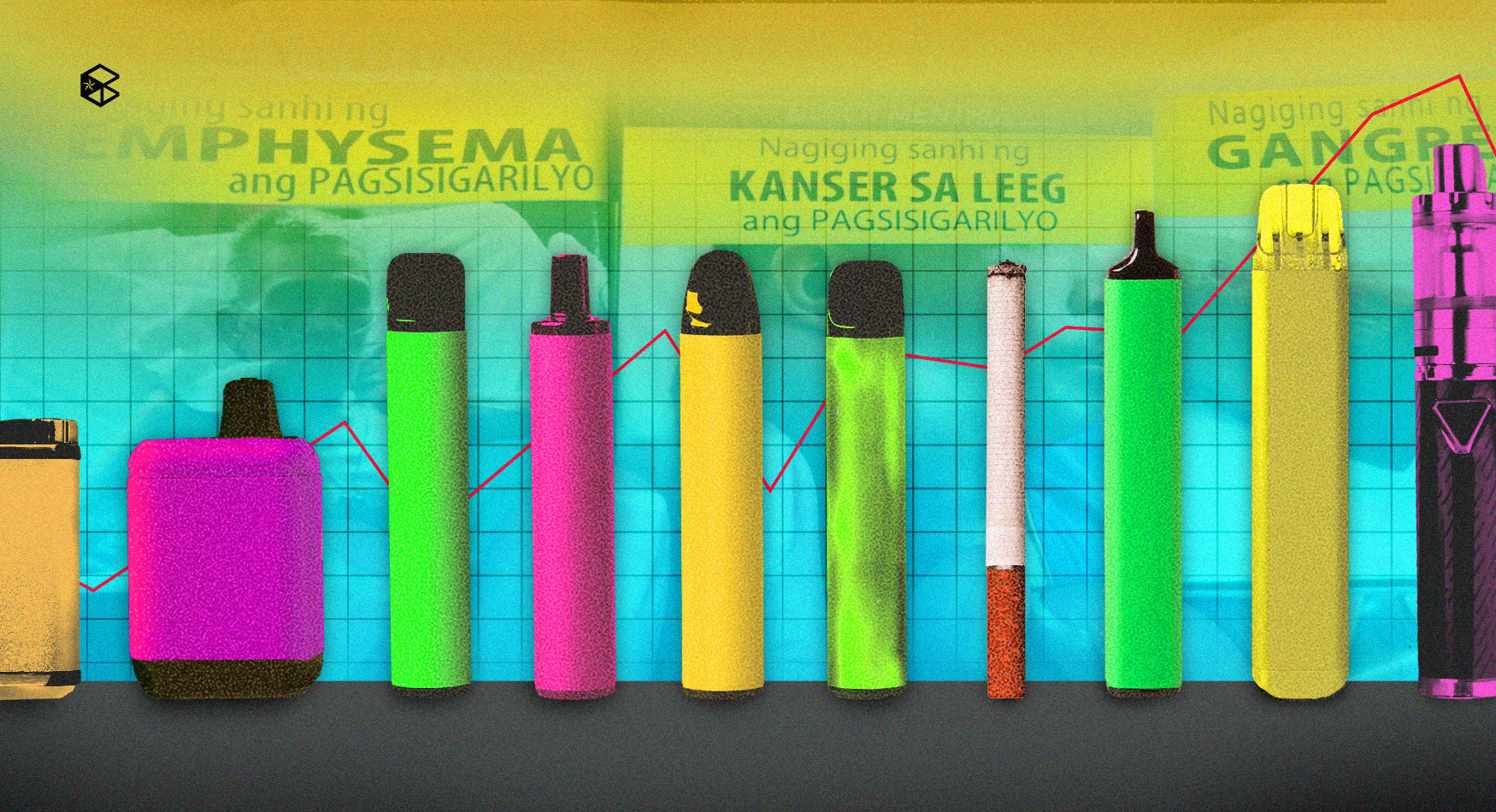After decades of anti-smoking efforts, youth smoking was declining at a record pace with the hope of finally abandoning it altogether. Unfortunately, vaping is just as ingrained as smoking once was in many users who have never touched a cigarette.
While cigarette smoking remains a major public health concern and a leading risk for premature death according to the World Health Organization, smoking has decreased by 27.5% in males and 37.7% in females ages 15 and older globally over the past three decades, based on data from the Global Burden of Disease Study in 2019.
As smoking gradually became less culturally accepted, electronic smoking devices (ESDs) gained popularity as a safer and more discreet alternative, initially oriented as a harm-reduction tool for smokers who were trying to quit.
However, the rise of vaping suggests that many users are instead being introduced to nicotine through ESDs. According to the Food and Nutrition Research Institute, vaping among young individuals has multiplied over tenfold from just 37,000 users in 2021 to 423,000 in 2023.
Not just smoke and mirrors
Earlier this month, medical groups in the country declared vaping as a growing epidemic among Filipino youth. According to the Youth Tobacco Survey in 2019, around 1 in 7 Filipino students aged 13-15 admitted to using ESDs.
Contrary to its terminology, vapes do not merely produce vapor. “They contain 7,000 chemicals that [are] actually seen in the smoke of a standard cigarette,” tobacco cessation expert Dr. Maria Encarnita Limpin clarified in a webinar conducted by the University of the Philippines.
“The content of some chemicals are lower in concentration but there is nothing that will show to us that because of this lower concentration, less harmful siya,” Dr. Limpin emphasized.
While ESD-related harms were once unclear, e‐cigarette or vaping-associated lung injury or EVALI already emerged as a life-threatening health concern. In 2023, the Philippines recorded its first vape-related fatality—a 22-year-old who suffered a heart attack after two years of daily vaping, which doctors say damaged his lungs and heart.
Children and adolescents who may be using ESDs or are exposed to secondhand smoke may experience negative effects on brain development, poor concentration, anxiety, mood disorders, and sleep disturbance, pediatric researchers found.
Smoke-free campus
In an exclusive interview with The Benildean, Mr. Mark Jefferson Peña of the Center for Restorative Discipline (CRD) reiterated Benilde’s strict “No Smoking and Vaping Policy.”
“It’s a policy of the country. Smoking in public places is prohibited. Mayroon siyang batas, so doon tayo nag-pattern,” he explained.
Under Section 7.6.2.20 of the Benilde Student Handbook, smoking, vaping, or using e-cigarettes within campus premises and property are considered a major offense. This includes areas such as e-jeeps and parking lots, Peña clarified.
Vaping and smoking activities are monitored through CCTV cameras, although enforcement in private areas like comfort rooms remains a challenge. “We have reports pero ‘di natin ma-verify because we don’t have CCTV inside the CR[s]”, the discipline officer noted.
Additionally, the College does not ban bringing cigarettes or ESDs as the policy recommendation is still under review. However, the CRD continues to collaborate with the Benilde Clinic for seminars and information dissemination efforts regarding the health concerns of vaping.
Peña highlighted the efficacy of constant reminders posted around campus in reducing on-campus vaping. “Before kasi very rampant ‘yung vaping pero [na-lessen] siya, 50-75% ‘yung binaba ng vaping case[s] namin because of that.”
Peña encouraged students to think twice about bringing their vapes to school and to review their handbook.
Marlboro man, reinvented
Just as the tobacco industry once funded research to falsely promote smoking as safe, e-cigarette pioneer JUUL has been scrutinized for selective reporting to favor company interests.
This is part of the vaping industry’s efforts to mirror cigarette companies’ tactics, University of Sydney researchers claim. Clinical trials in New Zealand and the United States have since shown that ESDs are not as effective as other smoking cessation methods, further challenging the industry’s claims that vaping helps smokers quit.
Philip Morris used the Marlboro Man, a once iconic marketing campaign in history, to make filtered cigarettes a symbol of masculinity. While cigarettes now carry a stigma, the Australian paper contends the marketing of ESDs with sweet flavors and trendy designs is entirely intended to make them appear harmless and socially acceptable.
The same playbook that once hooked generations on cigarettes is now being used to reverse decades of progress in tobacco control. ESDs have created their own set of new problems, proving they were never a solution but only a modern reincarnation of the cycle of addiction, misinformation, and profit repeating itself without stronger regulation.


